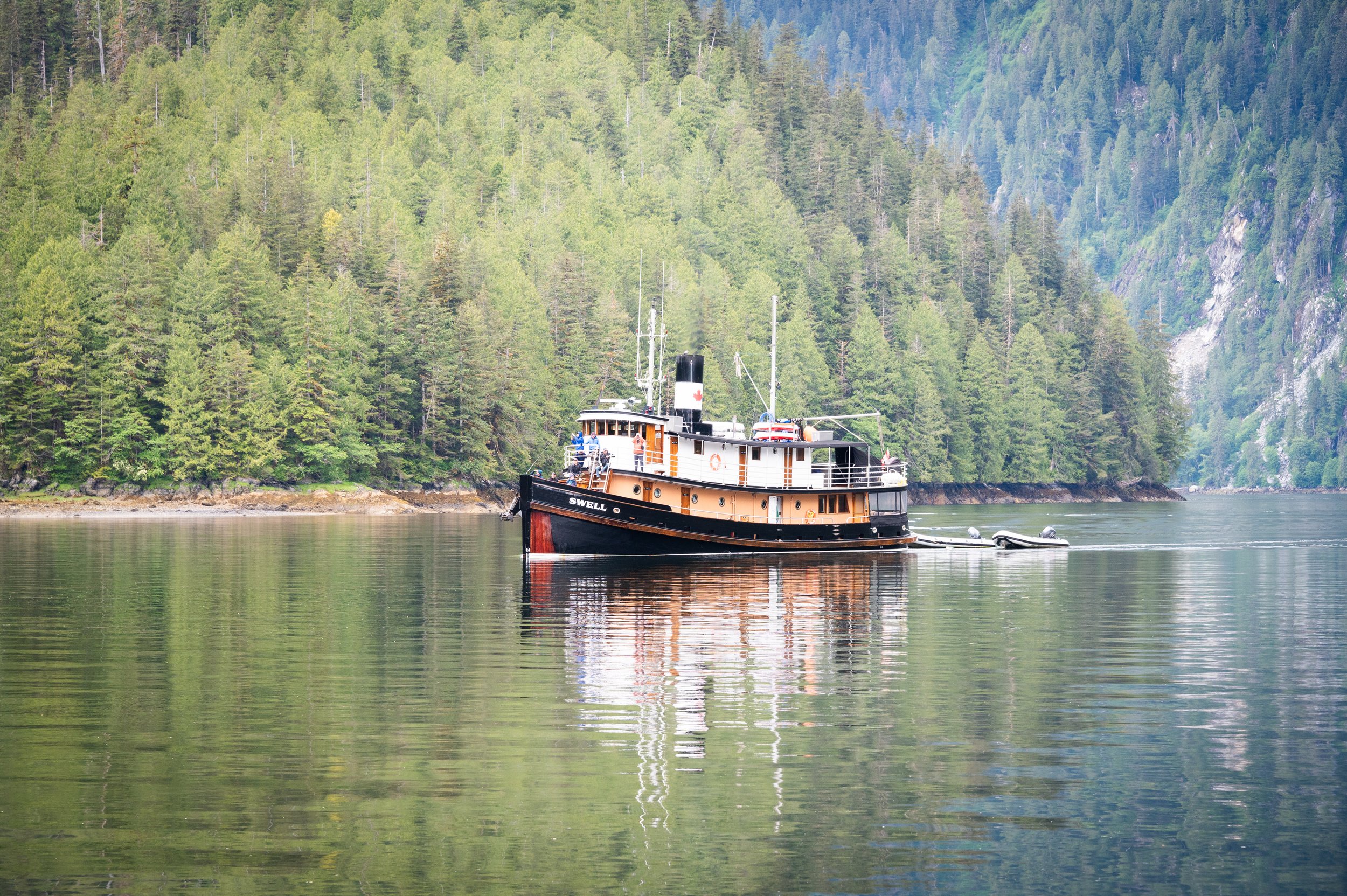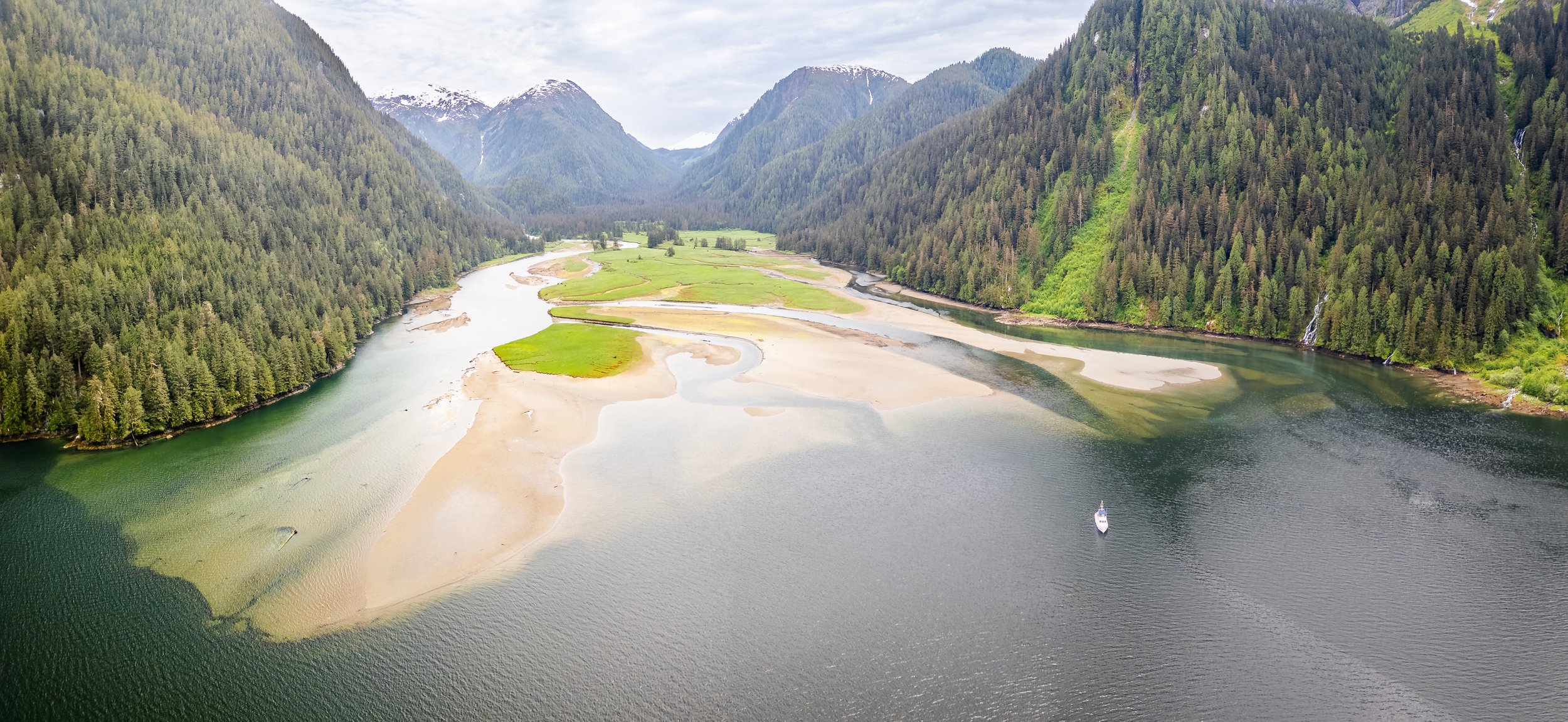Butedale to Outer Cove, Union Passage Marine Park
/The FUBAR 24 fleet, as they call themselves, scheduled their departure for 8am. Being rafted, we had to depart sooner. So at 7:45am, we fired up our engines and cast off from Lahaina Sailor.
Conditions were calm and the sun peeked out from the broken cloud cover, a welcomed change. There were lots of waterfalls on both sides of Fraser Reach that caught our attention. The FUBAR 24 fleet, not far behind us, turned up Ursula Channel toward Bishop Bay Hot Springs and we continued our way alone.
beautiful passages
We saw Hartley Bay in the distance as we entered Wright Sound. This body of water can be rough – or at least confused – as it is at the confluence of Whale Channel, Lewis Passage, McKay Reach, Grenville Channel and Douglass Channel. But not today – it was amazingly calm. We saw Fin whales traveling south as we crossed Whale Channel. We saw one large whale and a mom with a calf. Their fins are very distinctive.
We have never been to our destination today, Union Passage Marine Park. You can enter from either Grenville Channel or Cridge Pass. Both ends are guarded by Narrows where you need to enter at slack. Karen chose Peters Narrows off Cridge Pass, as it has a slightly lower flow (max 7 kts) and is deeper.
We entered at 12:02 (low water slack was estimated to be 12:19) and saw less than .5kts of current ebbing. Lowest depth was 14.5’, but mostly we saw depths in the low 20’s. The narrows is very well charted, and we liked entering at low tide to clearly see the obstacles.
Our original plan was to anchor temporarily in what the Douglass’s call “Outer Cove”, which is just beyond Peters Narrows, and then move into Farrant Lagoon later when the tides were more favorable.
We really liked the look of Outer Cove. It was very cozy feeling without being closed in. There were several “bear beaches” that looked promising, especially at the head of the cove. So, we settled in to relax before going out for dinghy exploration, as there is a lot of territory to look at.
cozy Outer Cove
we love these types of anchorages
First up was an exploration of Farrant Lagoon. The very few references we found to this area was that the Lagoon was a “ bombproof” and very remote-feeling anchorage. There is a narrow “neck” leading into the Lagoon that has about 1 fathom at zero tide. When we entered (2:48pm on a +5.3-foot tide), we saw no less than 19 feet, though that could vary a lot depending on the route you choose. The lagoon itself is extremely large, and the winds were such that there was fetch from one direction that clashed with the flood tide. It certainly could hold several flotillas, but to us the Lagoon was nowhere as pretty as our spot in “Outer Cove.” So, on we went.
Next stop was to check out the other entrance, Hawkins Narrows, which leads to Grenville Channel. The current was running when we arrived, estimated about 4.8kts of inflow when we let the dinghy drift. This narrows is less wide than Peters, and has a rock in the fairway. We’d bring the big boat in at High Water Slack. We took a brief spin out into Grenville Channel, and then went back the way we came. We did see a sea lion pop its head up to look at us as we went past.
Perhaps our favorite part of the exploration was back near Outer Cove, when we looked at the outlet to 2-mile long Tsimtack Lake. We were able to go a short ways toward the lake before being blocked by rocks, abandoned equipment and rapids. We dropped the anchor in the outflow current so I could take some pictures, and then returned back to OceanFlyer to warm up. Total miles for the dinghy trip: 7.6 nautical miles.
as far as we can go
a closer look at the abandoned equipment that bock our way
Later that evening, we spotted a large black bear near the creek outflow at the head of the anchorage.
























